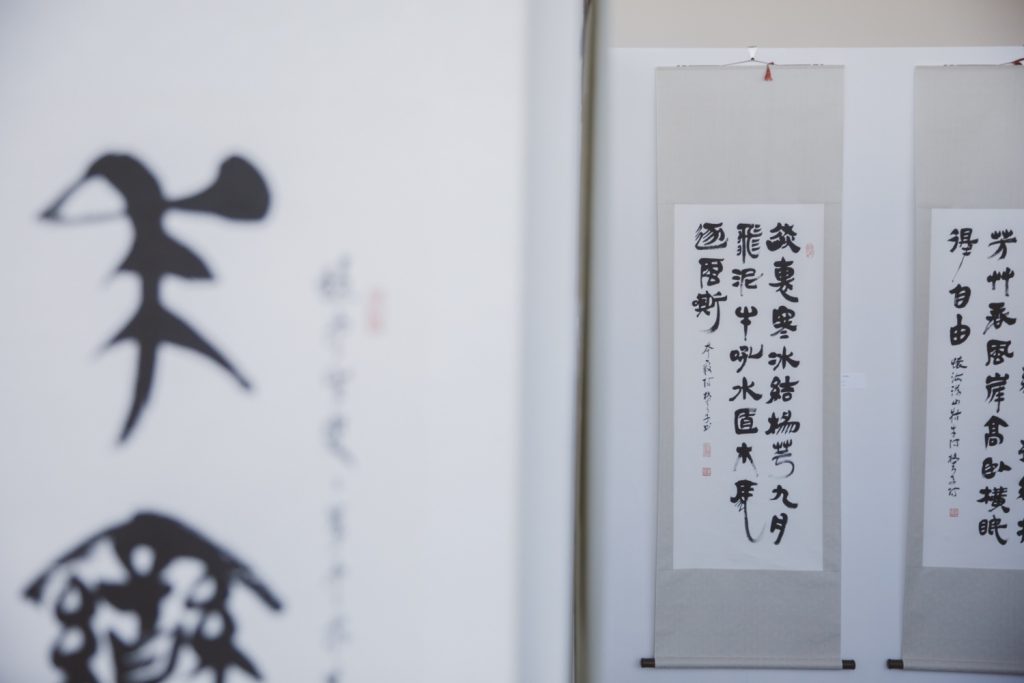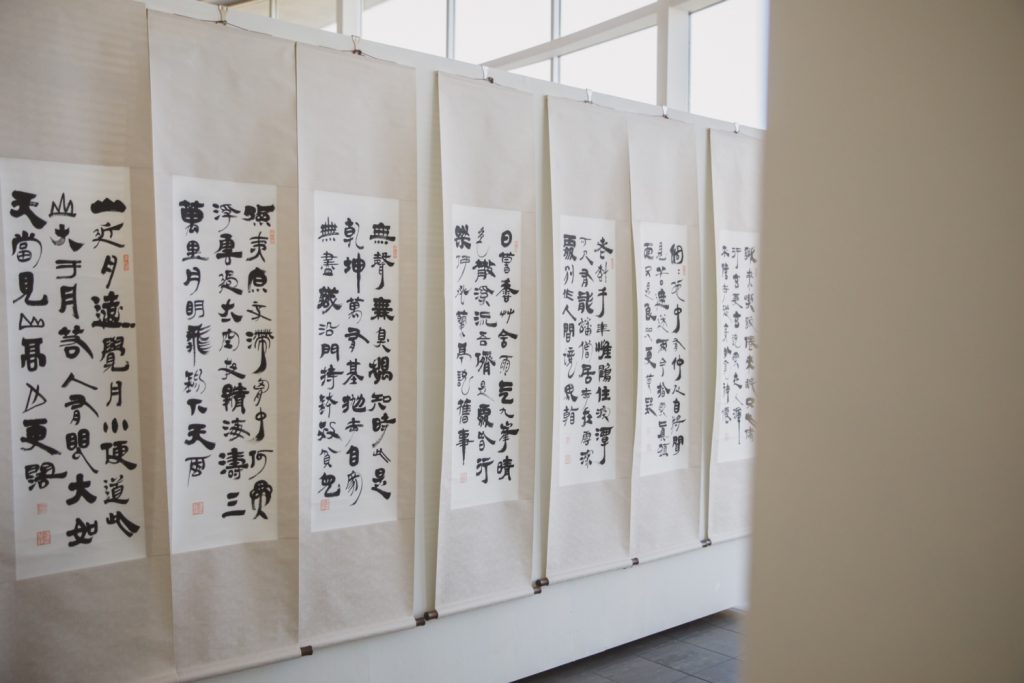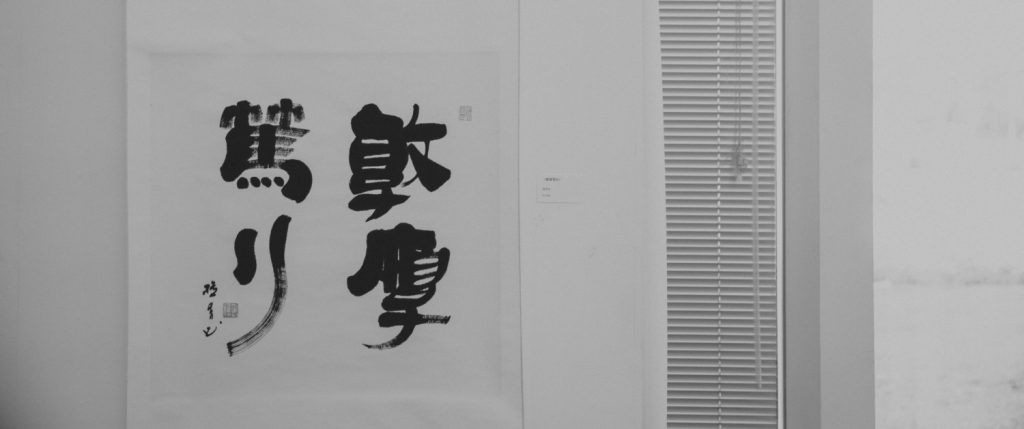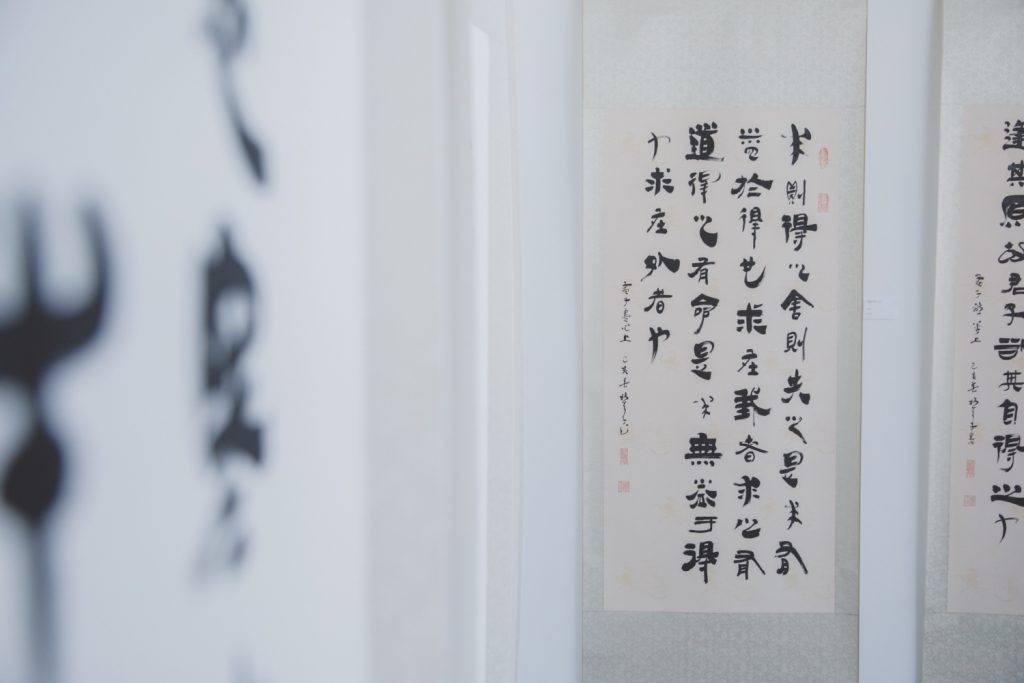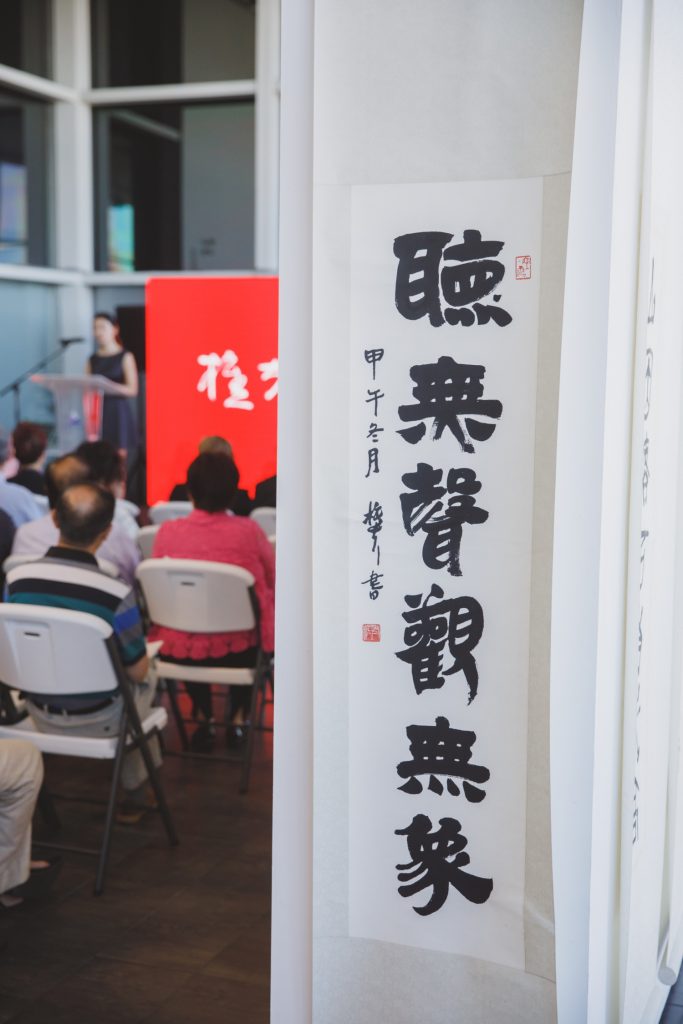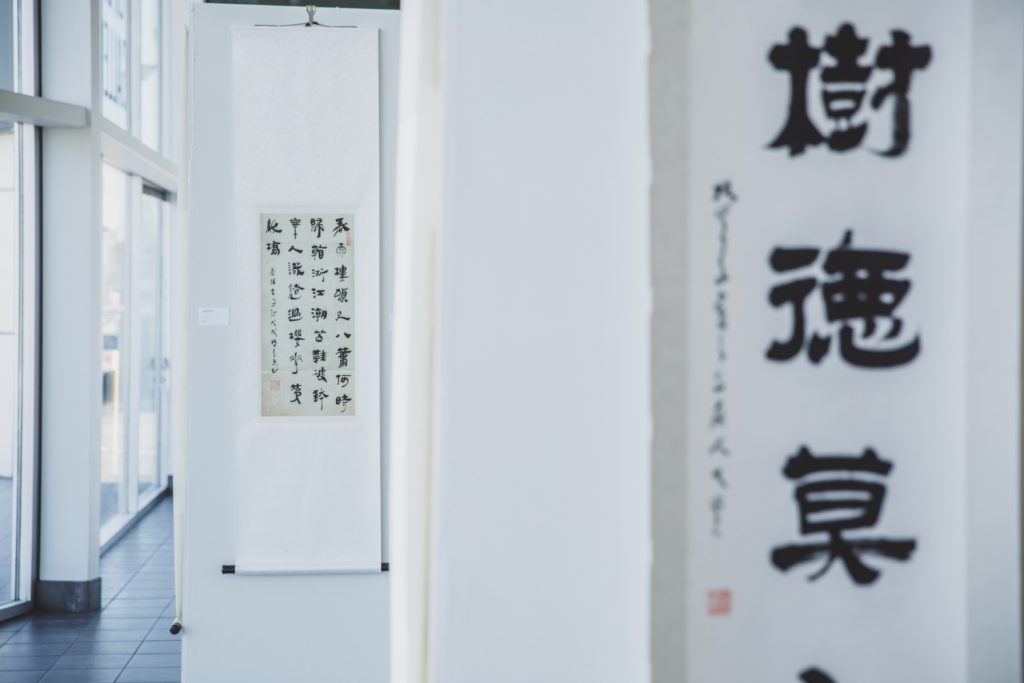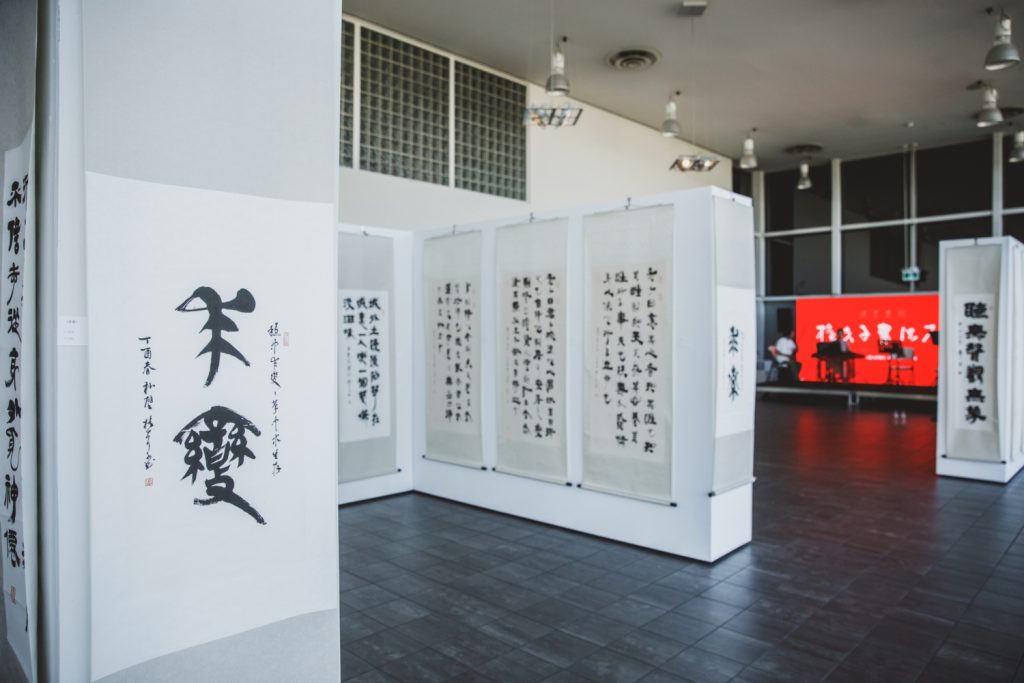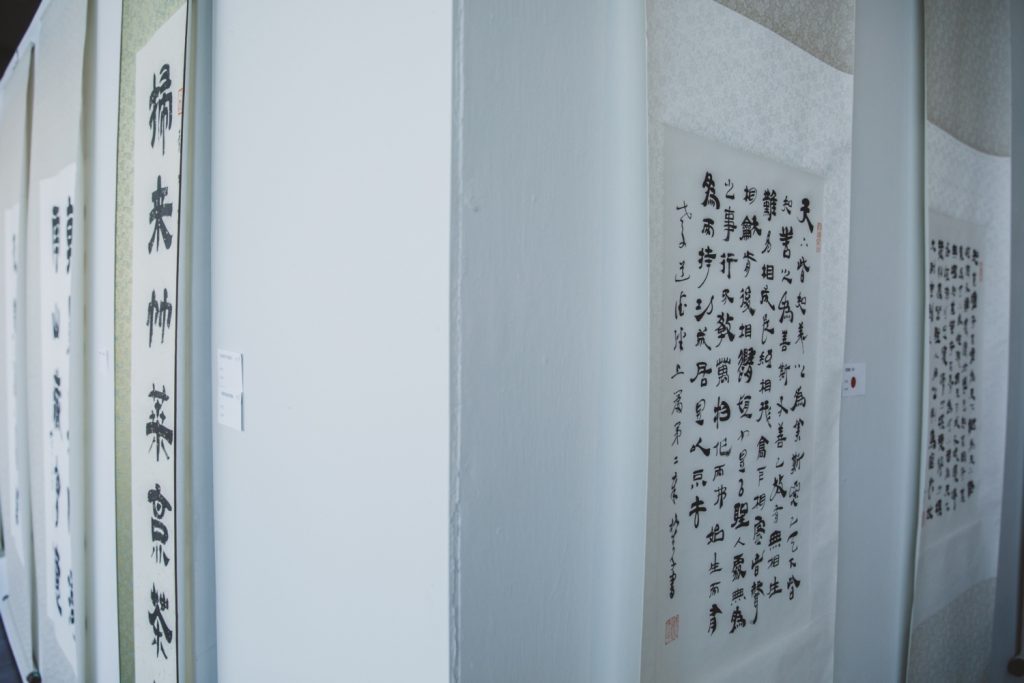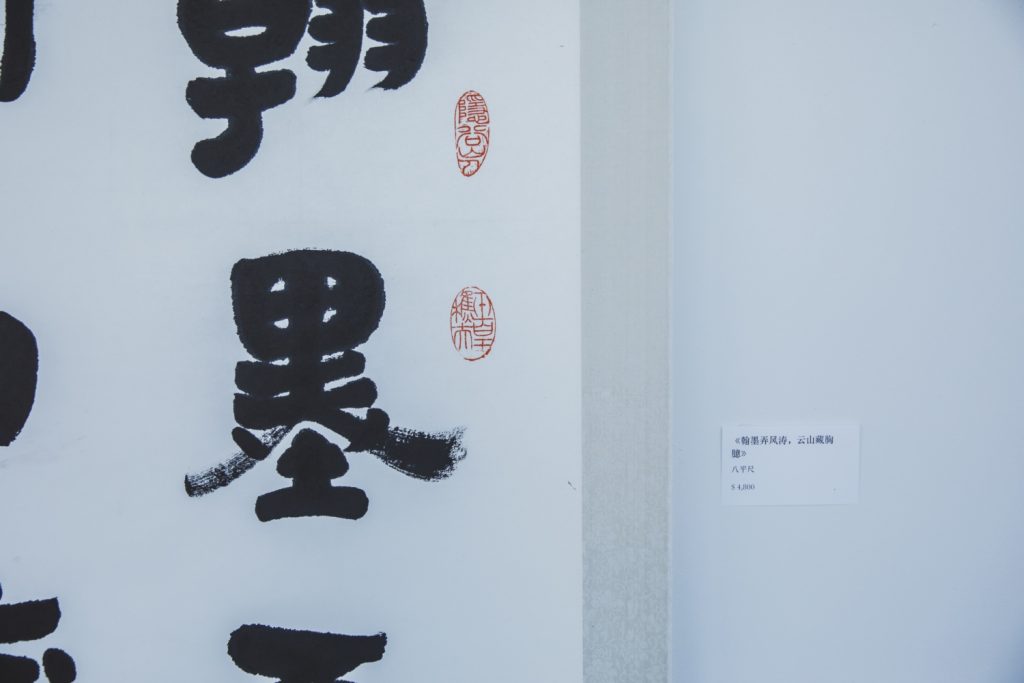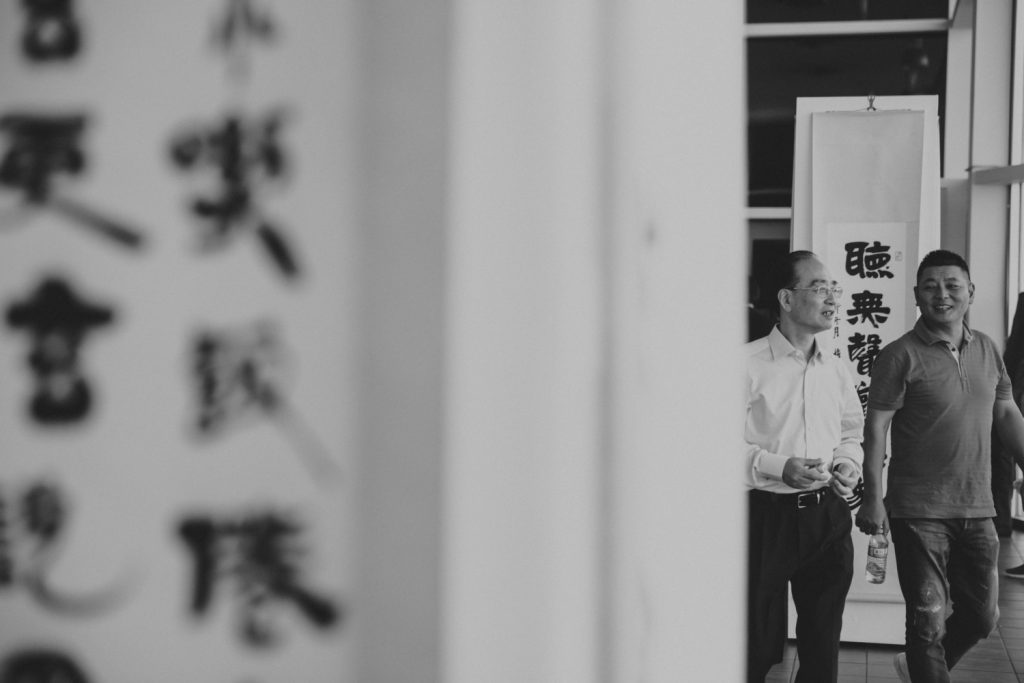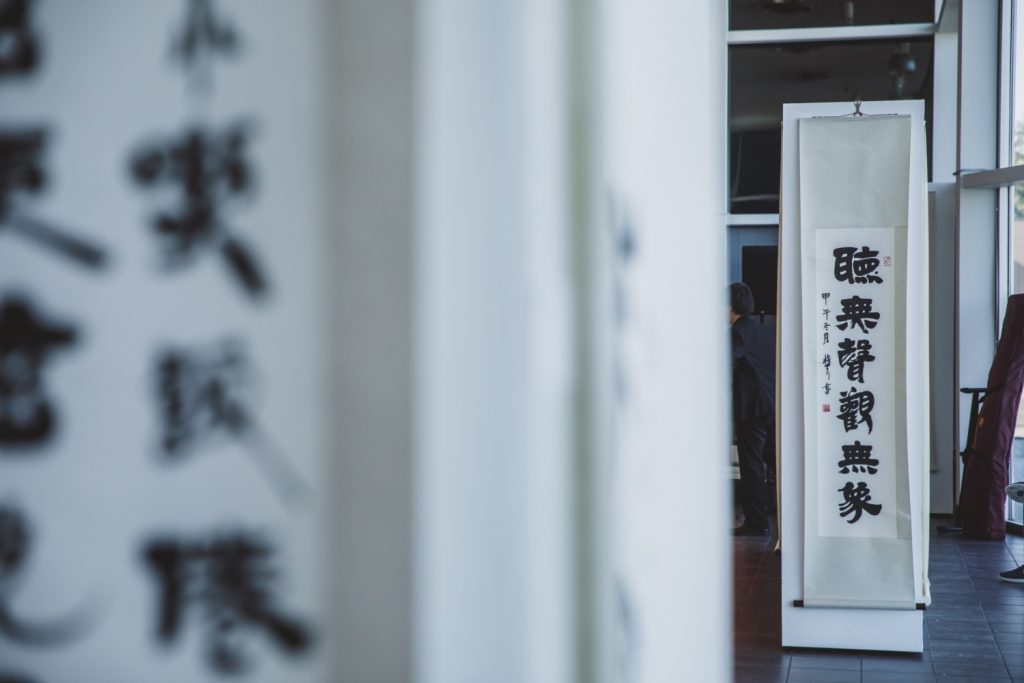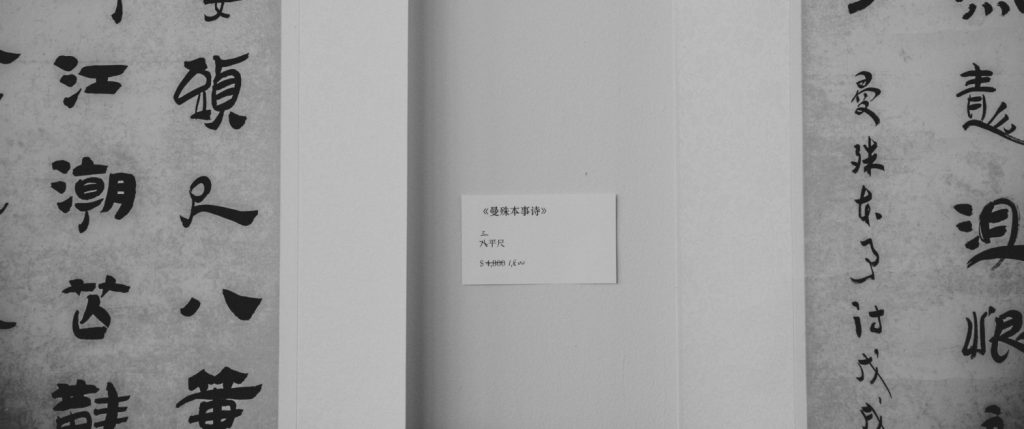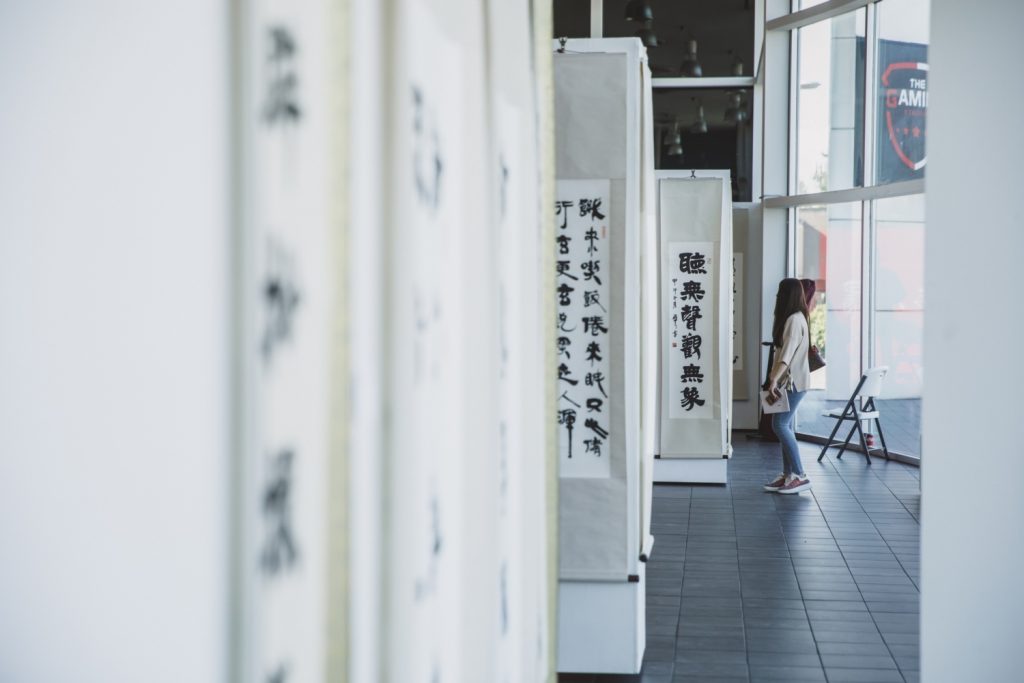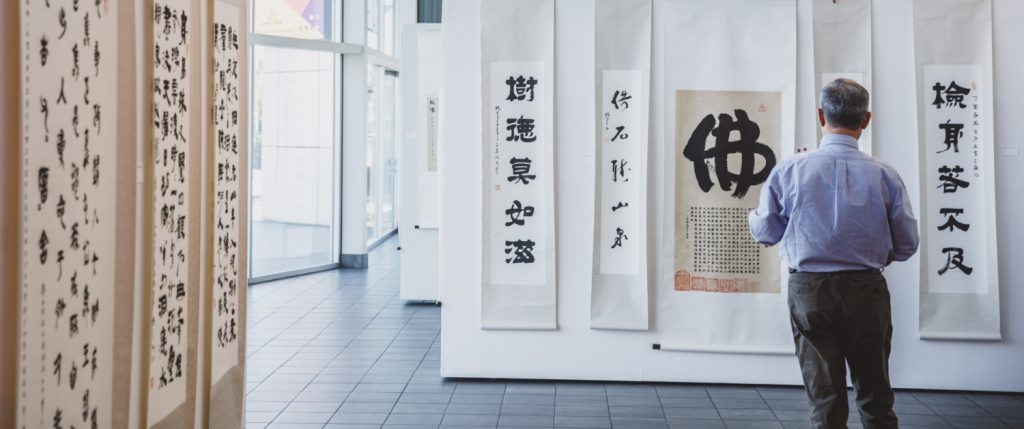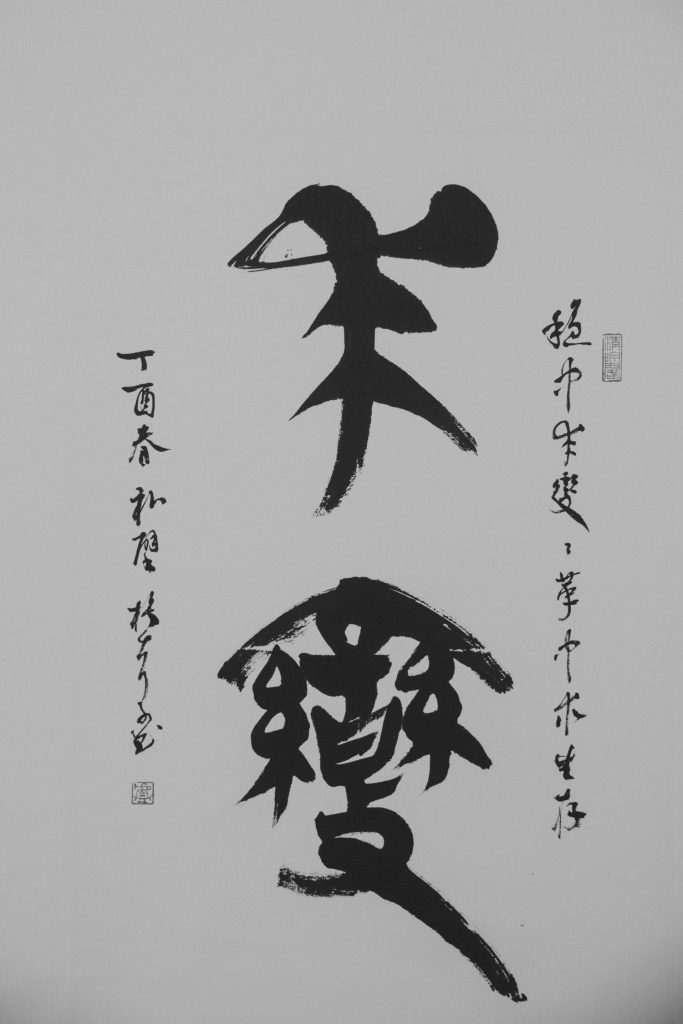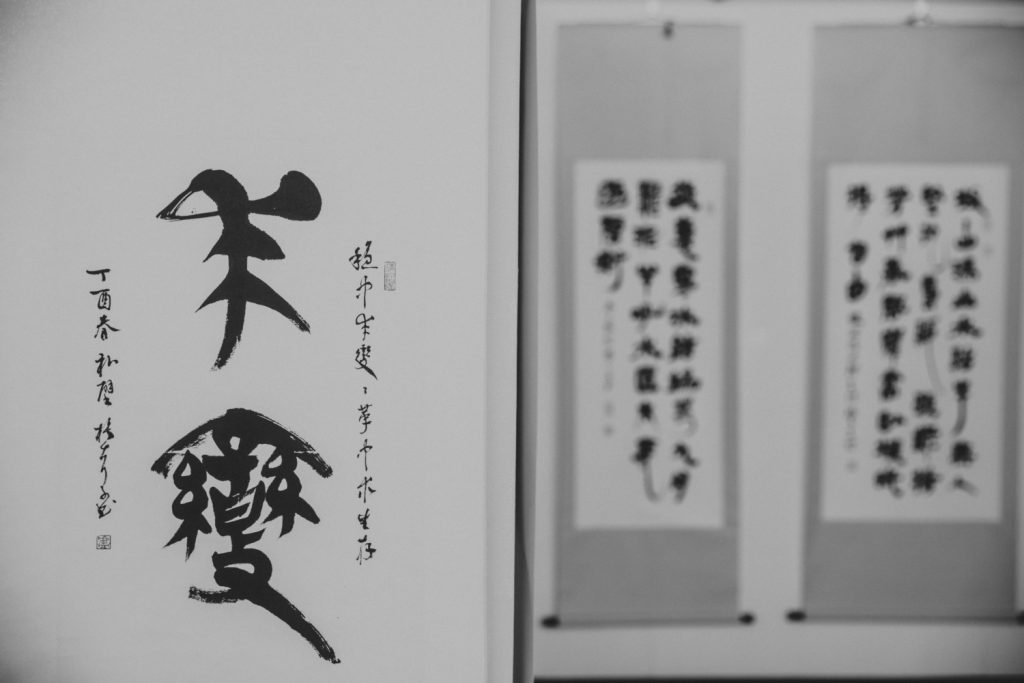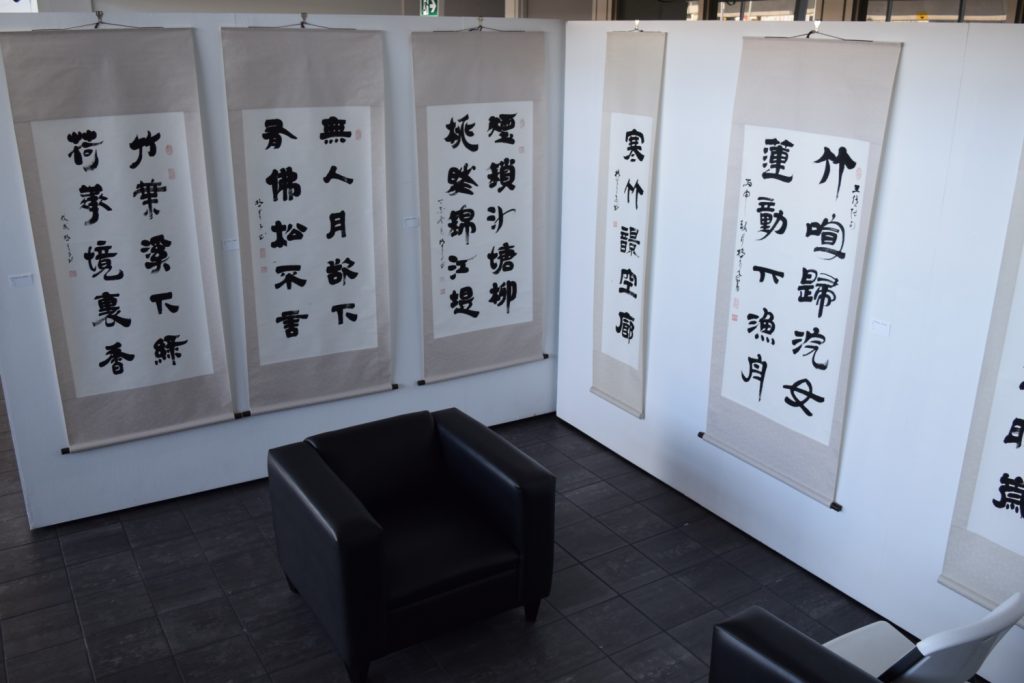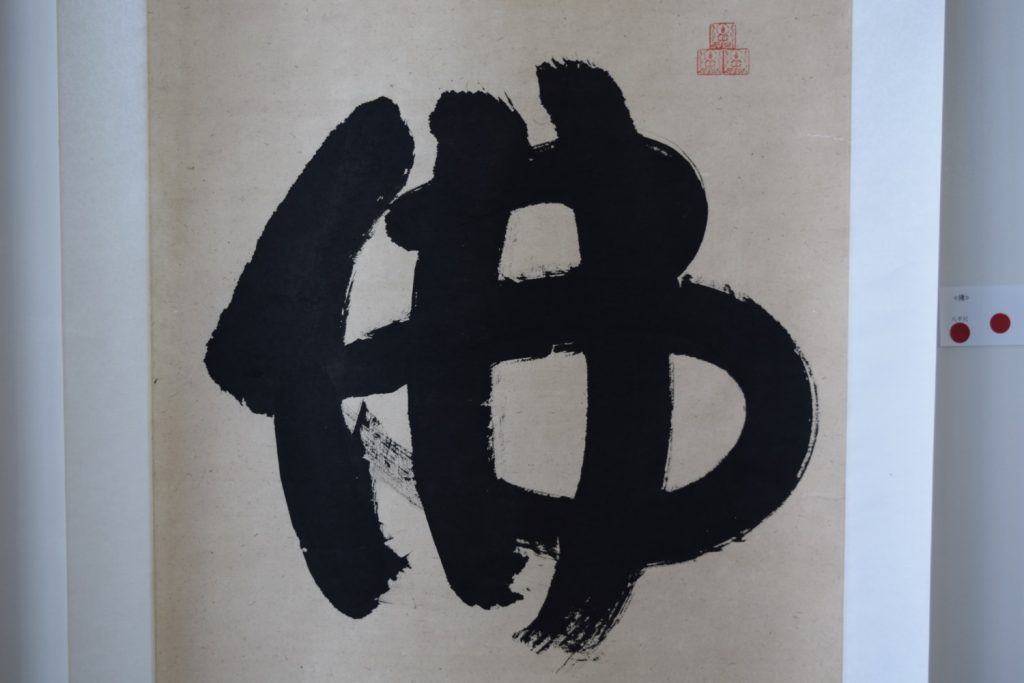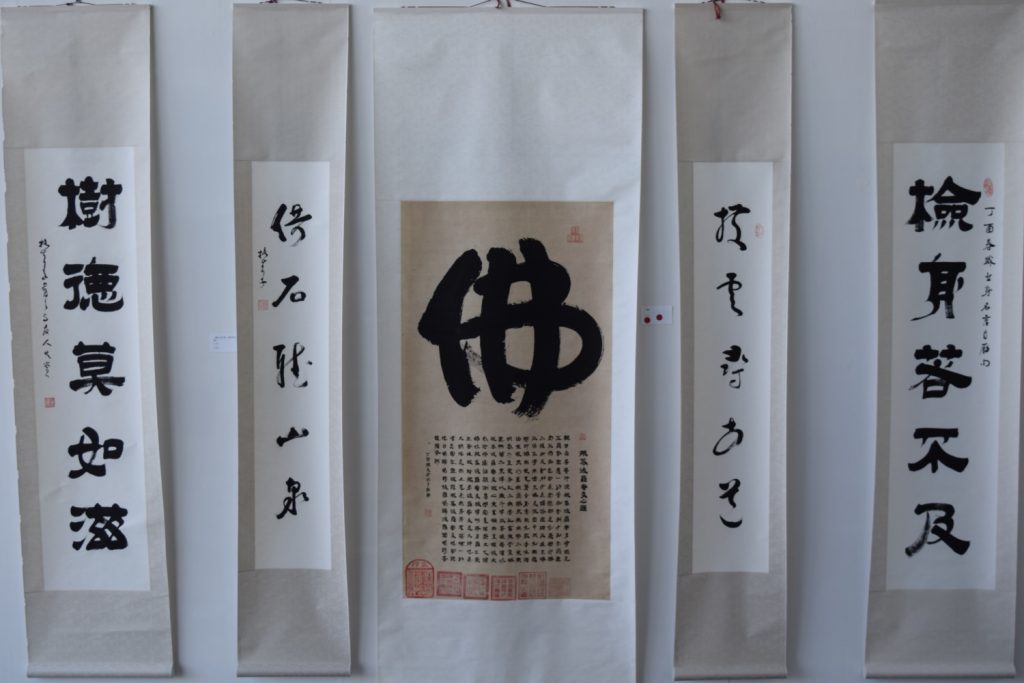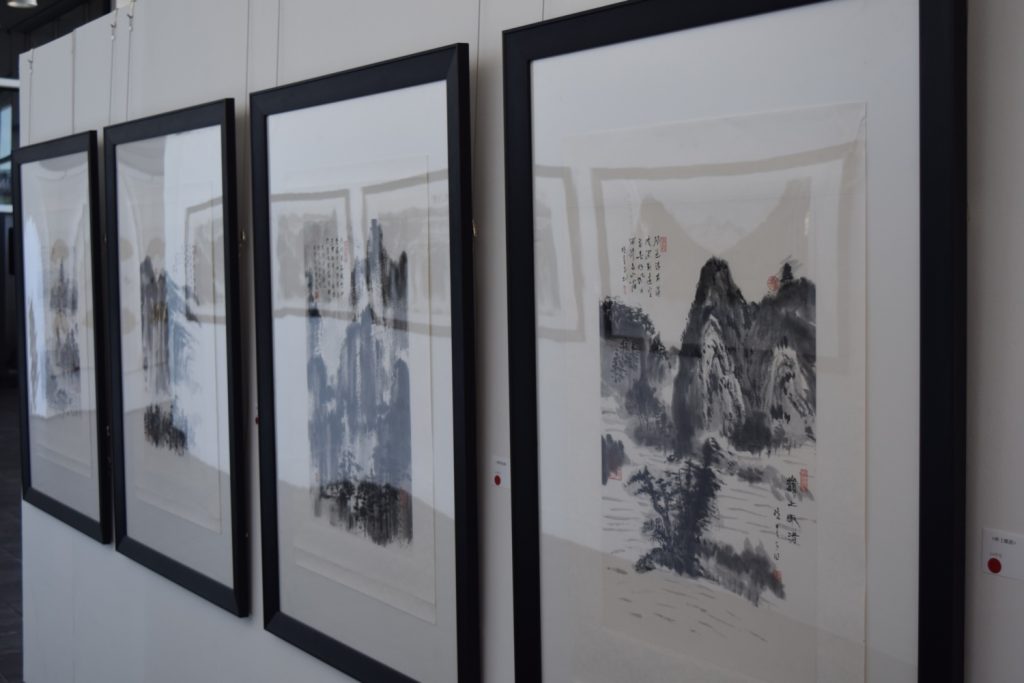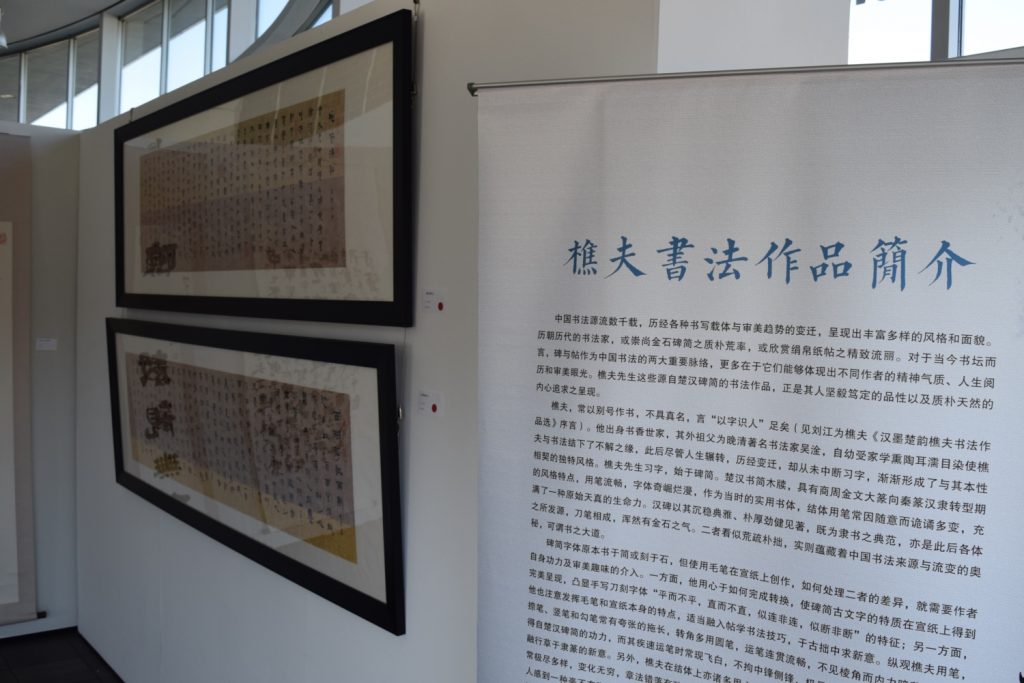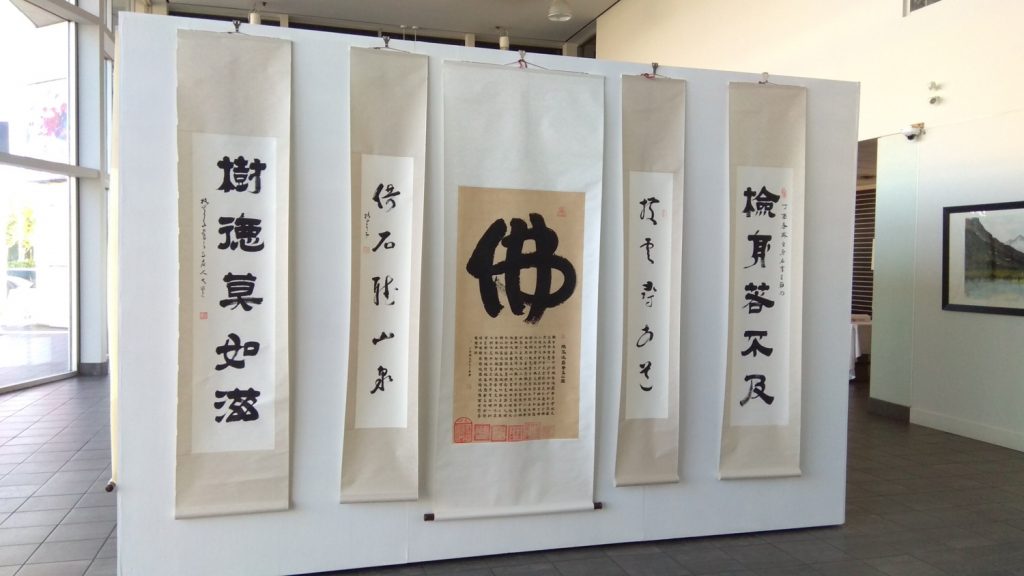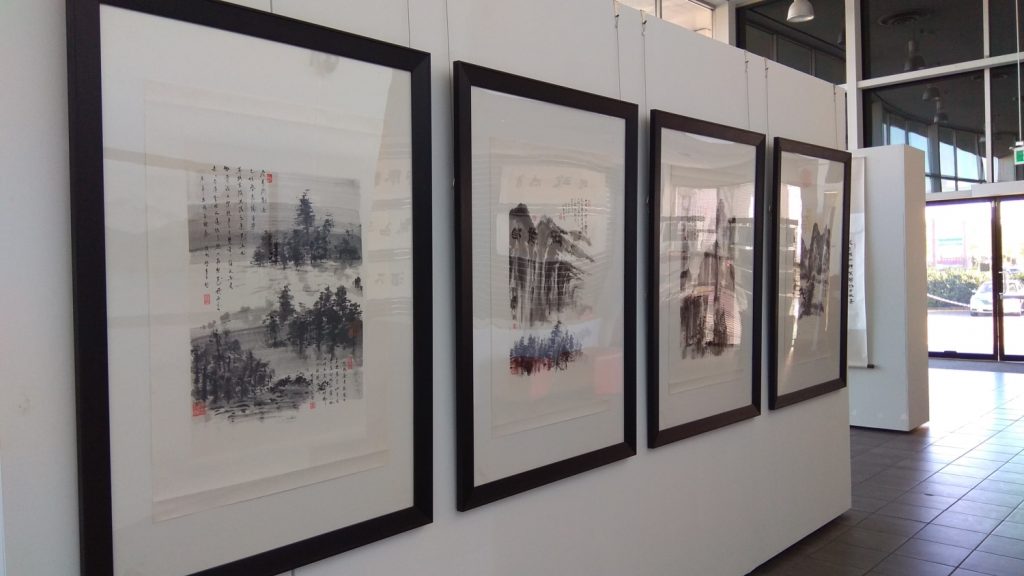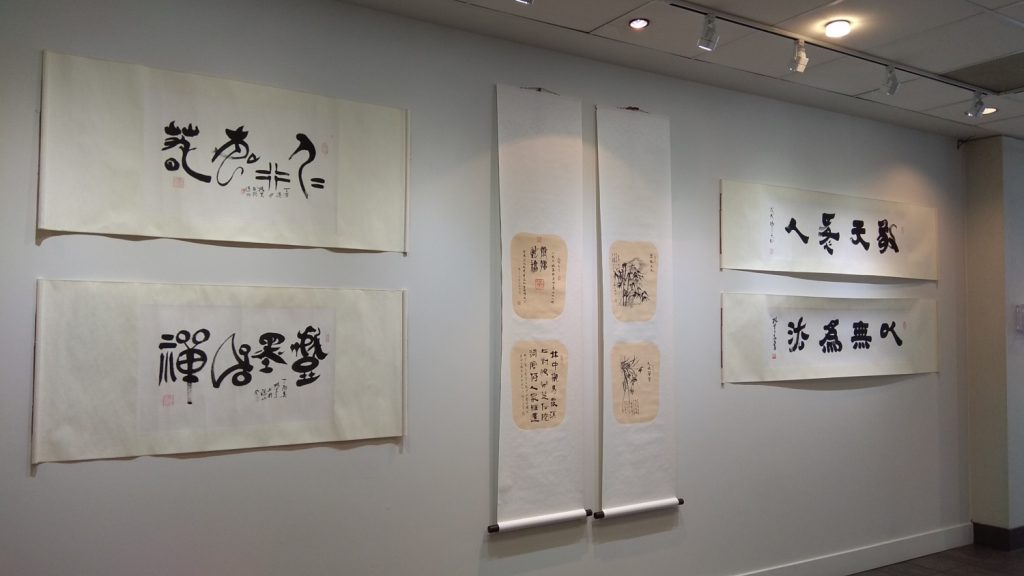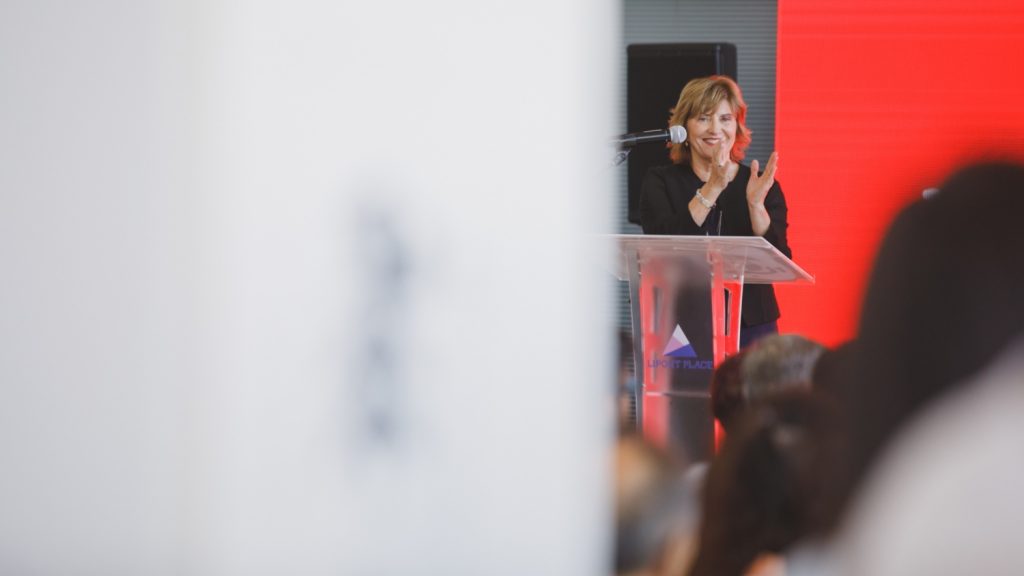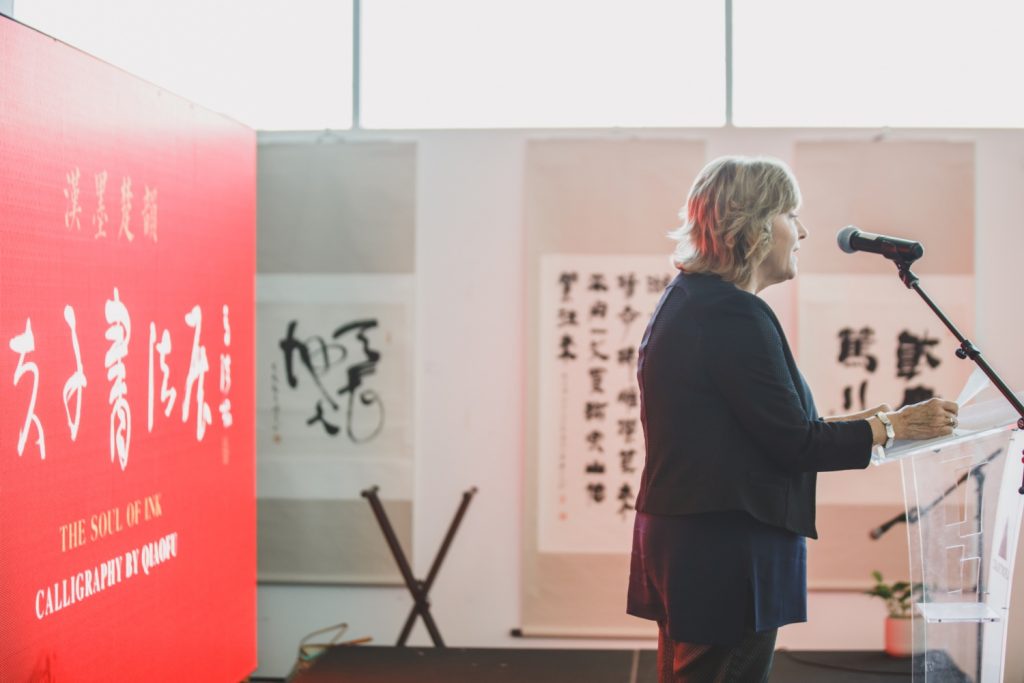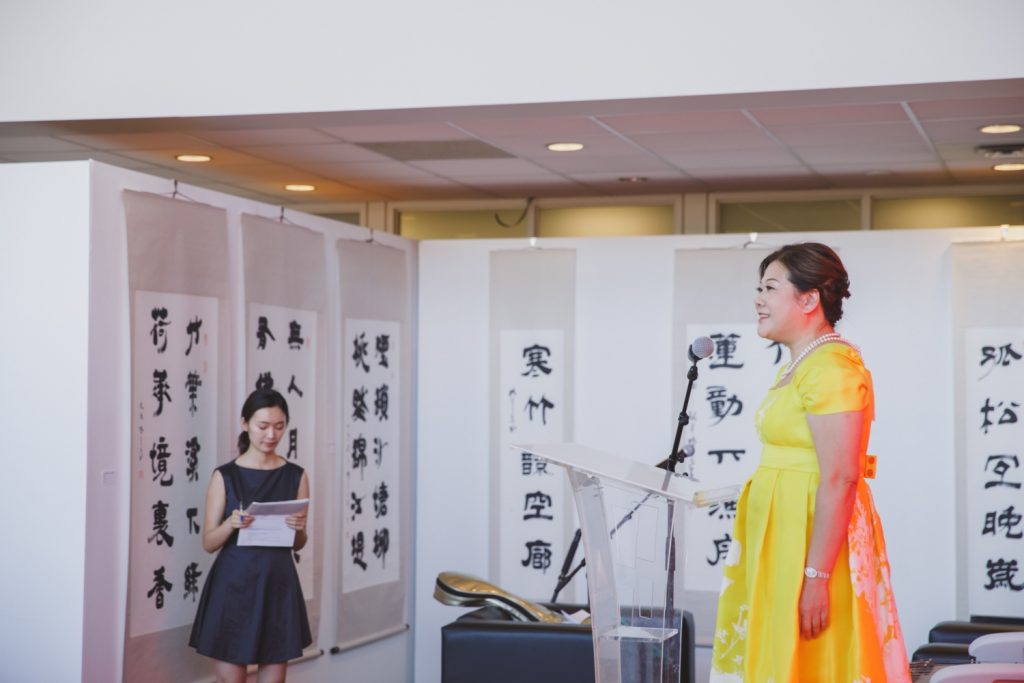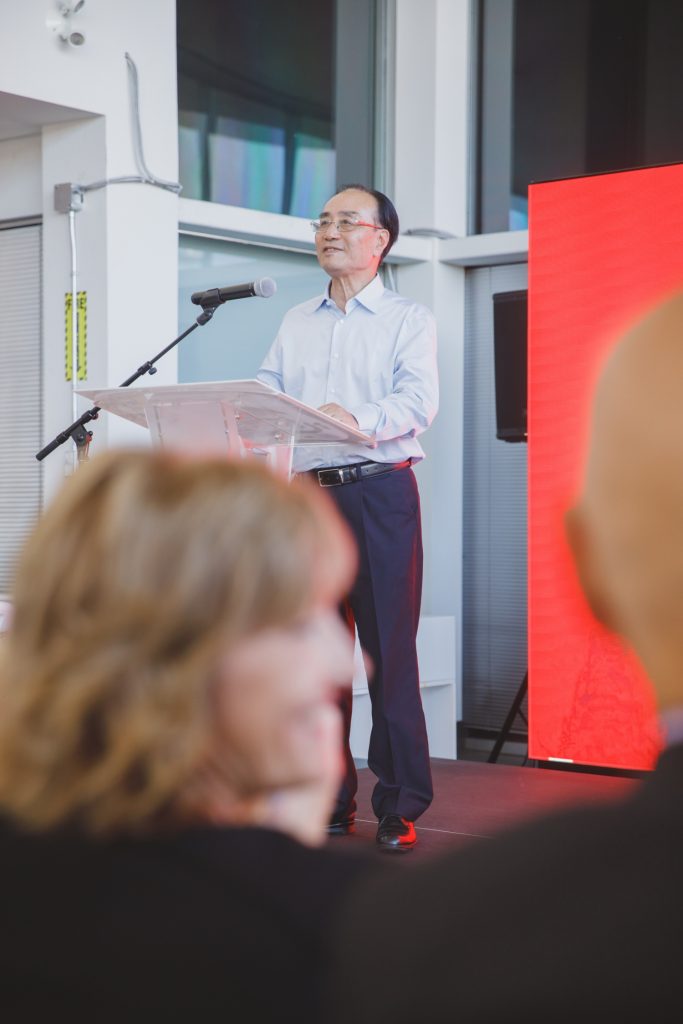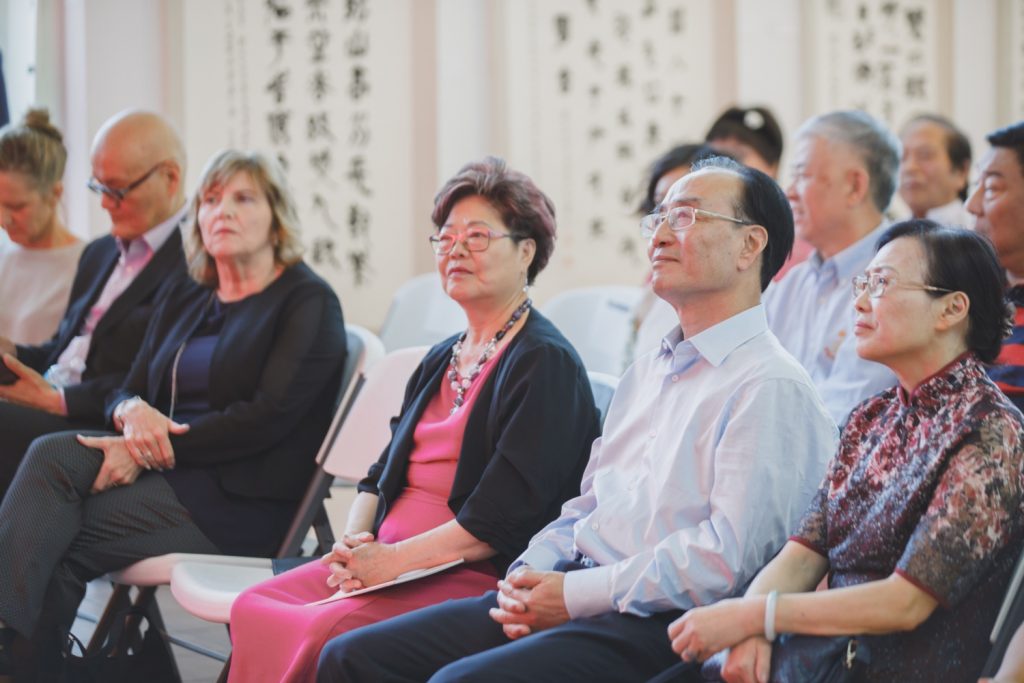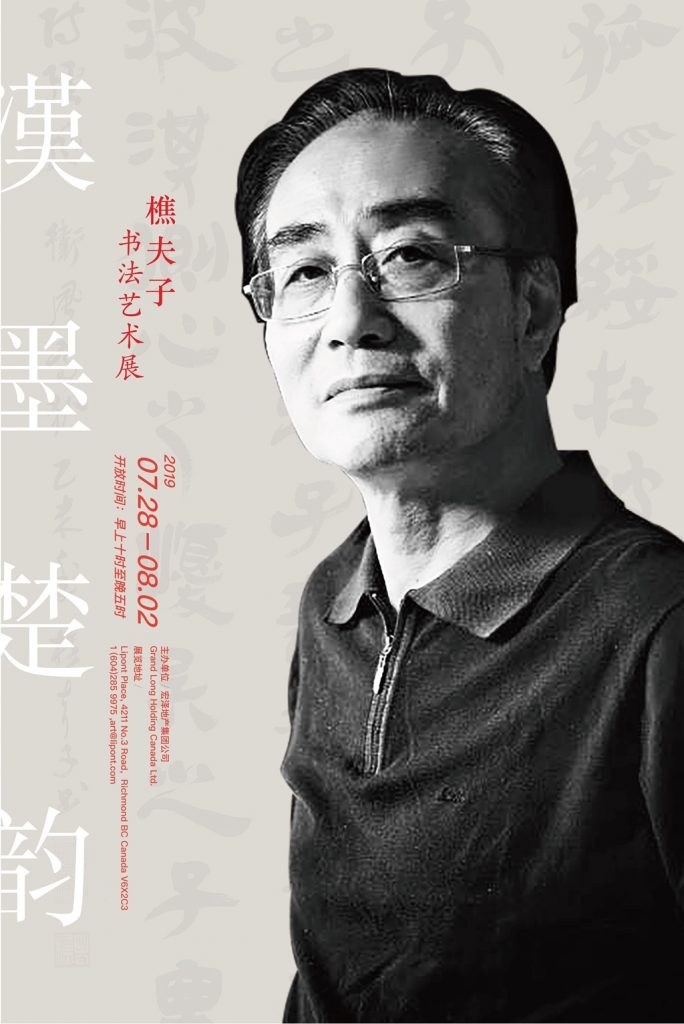
Grand Long Holding Canada Ltd. presents
THE SOUL OF INK – CALLIGRAPHY PAINTING BY QIAOFU
The Soul of Ink — Calligraphy by Qiaofu
Chinese calligraphy has developed throughout a long history over thousands of years and has experienced various changes in terms of writing tools and aesthetic trends, displaying rich and diversified styles and features. Calligraphers during past dynasties and periods either advocated pristine plainness of works on metal, stones, steles and bamboo tablets, or refined elegance of works on silk, cotton, paper and rubbings. In the calligraphy circle today, inscriptions on steles and rubbings, as two significant veins of Chinese calligraphy, can largely reflect spiritual temperament, life experience and aesthetic insight of different authors. The calligraphy by Mr. Qiaofu based on ancient works on steles and bamboo tablets, precisely embody his unswerving fortitude and unaffected heart in pursuit of pure nature.
Qiaofu, literally translated as woodcutter, signs his calligraphy works with a pen name instead of his real name. He proposes that “calligraphy alone suffices to recognize a person” (recorded in the preface written by Liu Jiang for the Calligraphy Collection of Qiaofu). Born into a literati family, Qiaofu developed an indissoluble bond with calligraphy since childhood. He was profoundly influenced by his family members, such as his grandfather Wu Gan, who was a famous calligrapher in the late Qing Dynasty (1644-1912). Despite the vicissitudes in his life, Qiaofu never stopped practicing calligraphy and has gradually established a unique style matching his own personality. His practices in calligraphy started from inscriptions on steles and bamboo tablets. These inscriptions, dating back from the reign of Chu Kingdom and Han Dynasty (206 BCE-220 CE), have transformed from large seal script in the Shang Dynasty (ca. 1600-1050 BCE) and Zhou Dynasty (ca. 1046-256 BCE) to the seal script of the Qin Dynasty (221-206 BCE) and clerical script of the Han Dynasty (206 BCE-220 CE), with smooth, spectacular and romantic strokes. As the practical writing style is based on casual intentions, the concluding strokes are often full of unexpected changes and filled with primitive and unadorned vitality. Inscriptions on steles in Han Dynasty (206 BCE-220 CE), known for stable elegance and strong vigour, serve not only as a model for clerical script but also as a cradle for later calligraphy styles. With knives and brushes, they boast the features of both hardness and strength. These two, seemingly primitive and plain, actually contain the secrets of the origin and development of Chinese calligraphy, which could be called the greatest principle of calligraphy.
Scripts of this style were originally written on bamboo tablets or inscribed on steles. When using brushes on Chinese art paper, it demands the calligrapher’s capability and aesthetic taste to harness the variation properly. On one hand, Qiaofu pays great attention to the transition of ancient scripts on steles and tablets to Chinese art paper, such as its features of “even yet also uneven, bent yet also unbent, seemingly connected yet unconnected seemingly broken yet unbroken”. On the other hand, he also incorporates skills of paper-based calligraphy into giving full play of brushes and Chinese art paper to seek ingenuity out of pristine plainness. His right-falling strokes, vertical strokes and ticking strokes often presents exaggerating protractions while his turning strokes often employ rounding skills, offering continuous and smooth movement with internal force yet without abrupt angles or corners, due to the artistic foundation of ancient steles and tablets. When he wields his brush rapidly, hollow strokes emerge frequently and his writing styles change significantly, which reflects his ingenuity of incorporating running script into clerical script and seal script. Moreover, Qiaofu pays great attention to the structure of the Chinese characters in calligraphy, trying to present innovation and change. In his work, the structures of the same Chinese characters present various changes yet suitable orders, with subtle arrangement in size, interval, colour and balance. There is a proper sense of rhythm in them without any exaggeration, which is mild yet not dull. Dignified yet not rigid, perfectly balanced between fastness and slowness, between motion and stillness. From the calligraphy by Qiaofu, you can feel a type of tranquil vitality, which is neither stagnant boredom nor willful motion. He injects his inexhaustible internal passion into those seemingly mild strokes, which are full of temperature and fun. This realm, which is self-sufficient yet not distant from the mundane world, originates from his mentality that is indifferent to fame and fortune but close to Mother Nature. Qiaofu, though calling himself a simple man, never holds a passive attitude towards life. On the contrary, he has a positive attitude towards life and worked in many fields. The name Qiaofu, which literally means “woodcutter”, embodies an internal mental status he expects to maintain when he is involved in mundane affairs. When free from daily tasks, he keeps working on calligraphy of steles and tablets and manages to make significant achievements, which uncovers the possibilities of more varieties and balances. Such rare willpower may stem from classics of Confucianism, Buddhism and Taoism, which also embodied in his calligraphy.
Qiaofu advocates and respects the great philosophy of “the principle of Tao follows nature” and “Tao is not far from anybody.” In his own words, calligraphy should avoid being too “intentional, willful or crafty”, and “good Chinese characters in calligraphy are those free from any affectation and follow nature, while good art forms are those free from ornaments and good at describing things and touching people’s souls”. With these concepts, he tries to express these ideas through his work and wins extensive recognition and praise from renowned calligraphers at home and abroad, such as Mr. Shen Peng, Mr. Han Tianheng, Mr. Hou Beiren and Mr. Pan Gongkai, who speak highly of Qiaofu’s calligraphy. Renowned artists and scholars such as Mr. Liu Jiang, Mr. Wang Yigi, Mr. Lin Baiting, Mr. Si Shunwei, Mr. Chen Wangheng and Mr. Chen Qirong, have written reviews on Qiaofu’s calligraphy, “Natural and Ethereal, Follow Your Heart”, “Pure Mind and Deed, Progress Based on Accumulation”, “Straightforward, Casual, Mellow and Natural”, “Primitive Qiaofu”, “Qiaofu with Huayan Buddhism as Mirror” and “Bright Moon in Qin Dynasty and Tablets in Han Dynasty.”
Dec 2014
Soul of Ink – Calligraphy by Qiaofu, Silicon Valley Asian Art Center, USA
Apr 2015
Solo exhibition in Japan invited by Mr. Tokugawa Tsunenari (head of the
eighteenth’s generation of the Tokugawa family) and Mr. Dalin (Chairman of Okazaki Credit Cooperative Bank, the largest private bank of Japan)
Jul 2016
Soul of Ink – Calligraphy by Qiaofu, Art Gallery of Hangzhou Fine Art Institute, China
Dec 2016
Soul of Ink – Tao Te Ching Calligraphy by Qiaofu, Ningbo Museum of Art, China
Apr 2017
Soul of Ink – Calligraphy by Qiaofu, Xianghu Gallery, Hangzhou, China
Aug 2017
Soul of Ink – Buddhism Calligraphy by Qiaofu, Manichean Hall of Xuedou Temple
Oct 2017
Soul of Ink – Buddhism Calligraphy by Qiaofu, Yuyao Museum, China
Jul 2018
Soul of Ink – Buddhism Calligraphy by Qiaofu, Mount Putuo Art Gallery, China
Dec 2018
Soul of Ink – Calligraphy by Qiaofu, European Times Cultural Center of Paris, France
All his exhibitions were cherished by collectors from all walks of life.
Popular TV shows of Zhejiang Satellite TV Channel, such as “Calligraphy and Painting Garden” and “Treasure”, hosted special interviews on Mr. Qiaofu. Newspapers and magazines such as China Art Weekly, Cultural Newspaper and Hangzhou Daily, published Mr. Qiaofu’s calligraphy and reviews on his work.
汉墨楚韵 —— 樵夫书法作品简介
中国书法源远流长,在历史的长河中历经各种书写载体与审美趋势的变迁,呈现出丰富多样的风格和面貌。历朝历代的书法家,或崇尚金石碑简之质朴荒率,或欣赏绢帛纸帖之精致流丽。对于当今书坛而言,碑与帖作为中国书法的两大重要脉络,更多在于它们能够体现出不同作者的精神气质,人生阅历和审美眼光。樵夫先生这些源自楚汉碑简的书法作品,正是其人坚毅笃定的品性以及质朴天然的内心追求之呈现。
樵夫,常以别号作书,不具真名,言“以字识人”足矣(见刘江为樵夫【汉墨楚韵樵夫书法作品选】序言)。他出身书香世家,其外祖父为晚清著名书法家吴淦,自幼受家学熏陶耳濡目染使樵夫与书法结下了不解之缘,此后尽管人生辗转,历经变迁,却从未中断习字,渐渐形成了与其本性相契的独特风格。樵夫先生习字,始于碑简。楚汉书简木牍,具有商周金文大篆向秦篆汉隶转型期的风格特点,用笔流畅,字体奇崛烂漫,作为当时的实用书体,结体用笔常因随意而诡谲多变,充满了一种原始天真的生命力。汉碑以其沉稳典雅,朴厚劲健见著,既为隶书之典范,亦是此后各体之所发源,刀笔相成,深然有金石之气。二者看似荒疏朴拙,实则蕴藏着中国书法来源与流变的奧秘,可谓书之大道。
碑简字体原本书于简或刻于石,但使用毛笔在宣紙上创作,如何处理二者的差异,就需要作者自身功力及审美趣味的介入。一方面,他用心于如何完成转换,使碑简古文字的特质在宣纸上得到完美呈现,凸显手写刀刻字体“平而不平,直而不直,似连非连,似断非断” 的特征;另一方面,他也注意发挥毛笔和宣纸本身的特点,适当融入帖学书法技巧,于古拙中求新意。纵观樵夫用笔,捺笔,竖笔和勾笔常有夸张的拖长,转角多用圆笔,运笔连贯流畅,不见棱角而内力暗藏,这正是得自楚汉碑简的功力,而其疾速运笔时常现飞白,不拘中锋侧锋,极尽笔锋变化,又不难看出其中融行草于隶篆的新意。另外,樵夫在结体上亦诸多用心,求新思变,他的作品中,同一字之结体常常极尽多样,变化无穷,章法错落有致,字体大小,间距,墨色浓淡,左右重心常有微妙排布,让人感到一种毫不夸张却恰到好处的节奏感,平和而不平淡,端庄而不板滞,不徐不疾,动静相宜。樵夫先生的书法能够让人领略到一种平心静气的活力,既非一潭死水的枯寂,也非肆无忌惮的挥洒,而是用内心不熄的热情,熔铸一笔一划,虽然平缓,却笔笔带着温度,时时充满趣味,自得境界,而不远离人间。这种境界或许来自樵夫淡泊名利,返璞归真的心境。他以山野之人自号,对待生活的态度却并非消极避世,相反,他始终积极用世,从事过诸多行当,而“樵夫”则是他期待自己在入世的同时能够一直保持的内心状态。遍阅世事之余,坚持潜心探求,为碑简书法创作,开辟出一番新貌,让人看到了更加丰富与平衡的可能性,殊为不易。这样的定力,或许也来自樵夫书法内容中的儒释道家经典。
自古以来“道法自然”,“道不远人”的至理,深受樵夫先生的推崇,用他的话说,书法创作应该 “不刻意,不率性,不油滑”,“能够去除一切做作,回归天然的字才算好字,落尽繁华,体物近人的艺术才是好的艺术”。他秉承这样的理念,并一直尽力使它们在自己的作品中得到体现。也许正因如此,樵夫先生的作品得到了国际国内书画家的广泛赞誉。近年来,沈鹏先生,韩天衡先生,侯北人先生和潘公凯先生等著名书画家为樵夫书法作品題字,刘江先生【自然空灵,应心而行】,王翼奇【心迹双清,积健致远】,林柏亭先生【率真随性,圆润自然】,斯舜威先生【“古质”的樵夫】,陈望衡先生【樵夫——以华严为镜】,陈崎嵘先生【秦时明月汉时简】等著名书画家与学者为其撰写书评。
2014年12月,美国硅谷亚洲艺术中心【汉墨楚韵樵夫书法作品展】。
2015年4月,受日本德川家族第十八代当主德川恒孝先生及日本最大的私营银行冈崎信用金库理事长大林先生邀请,樵夫先生赴日举办个展。
2016年7月,杭州画院美术馆【汉墨楚韵樵夫书法作品展】
2016年12月,宁波美术馆【汉墨楚韵樵夫道德经书法作品展】
2017年4月,杭州湘湖美术馆【汉墨楚韵樵夫书法作品展】
2017年8月,雪窦寺摩尼殿【汉墨楚韵樵夫佛教书法展】
2017年10月,余姚市博物馆【汉墨楚韵樵夫佛教书法展】。
2018年7月,普陀山书画院【汉墨楚韵樵夫佛教书法展】
2018年12月15日,巴黎欧洲时报文化中心【汉墨楚韵樵夫巴黎书法展】
作品被国内外书法爱好者相继收藏。浙江卫视【书画园地“宝藏”栏目】均有专题采访樵夫先生的报道。美术报,文化报,杭州日报等报刊、杂志都陆续刊登樵夫先生的书法作品和书评。

